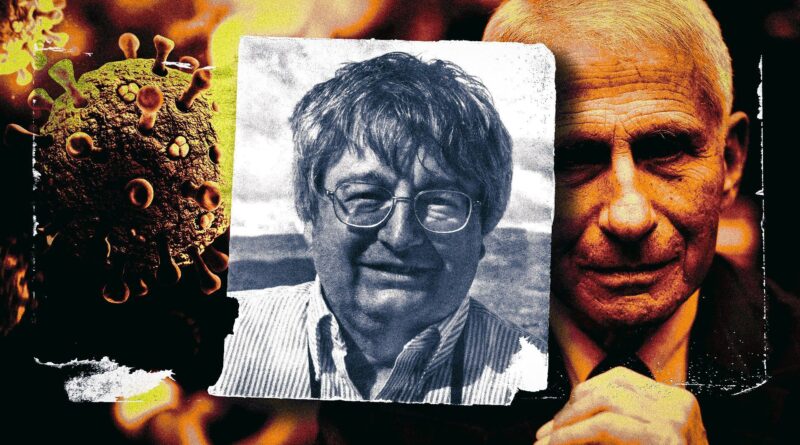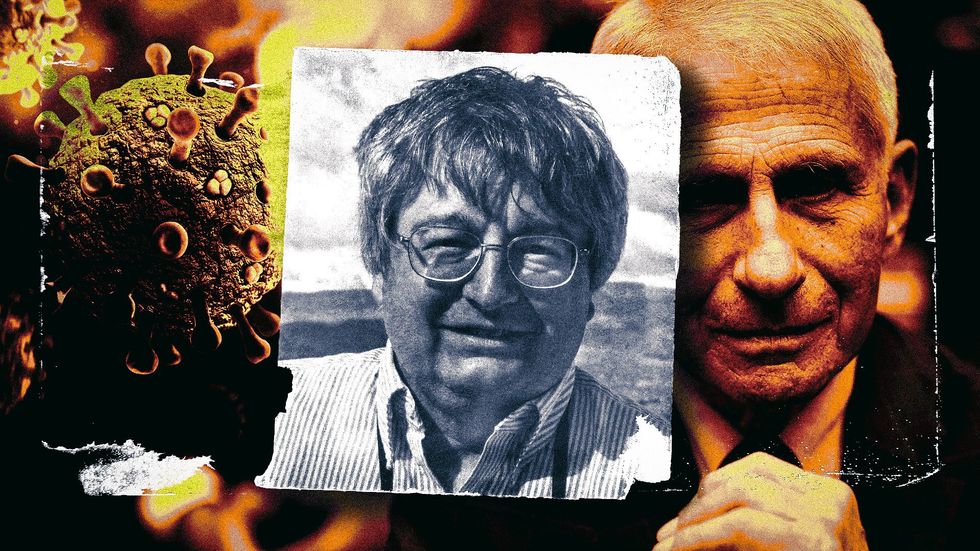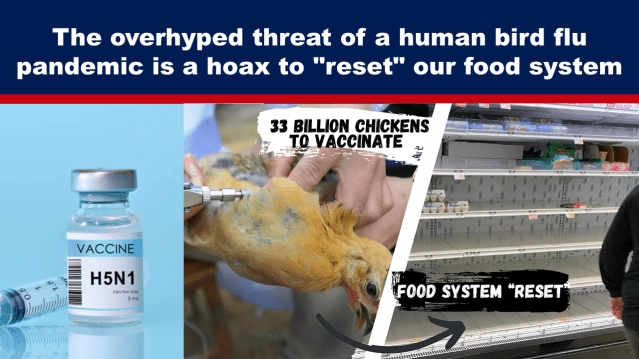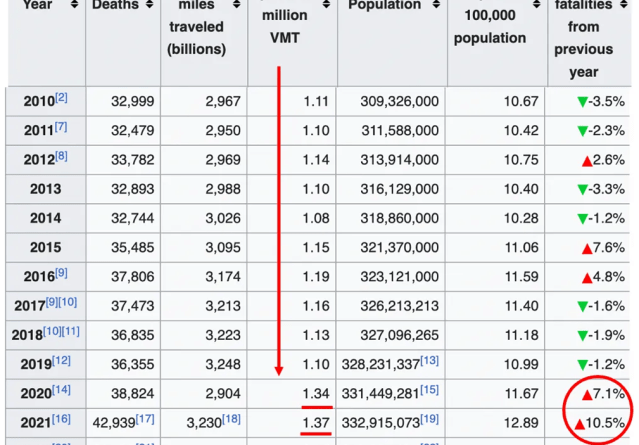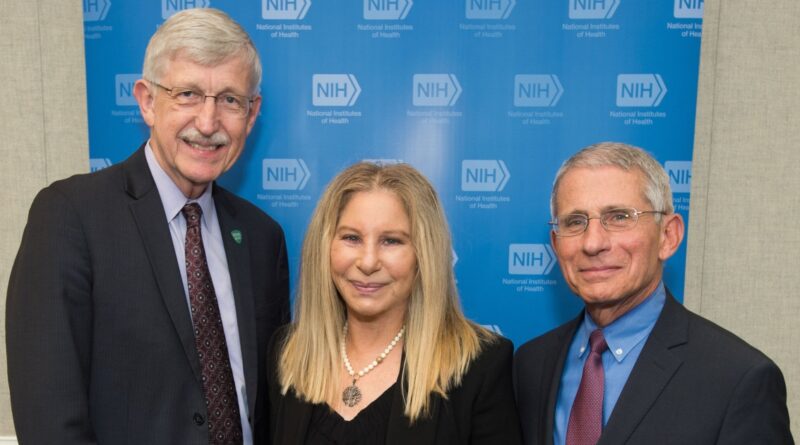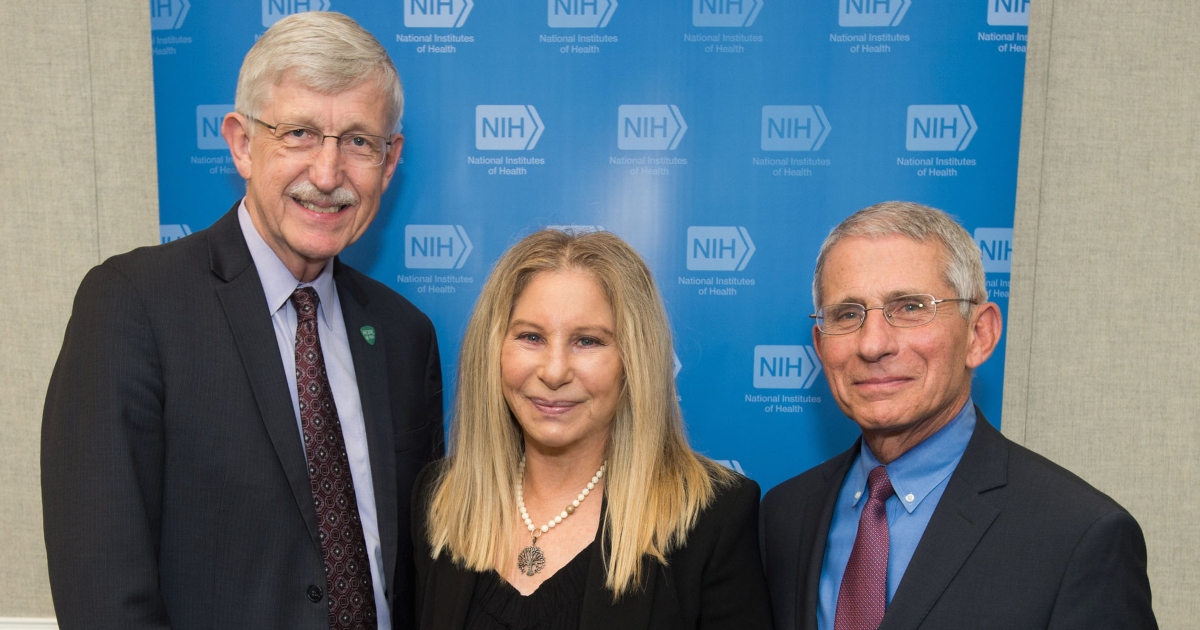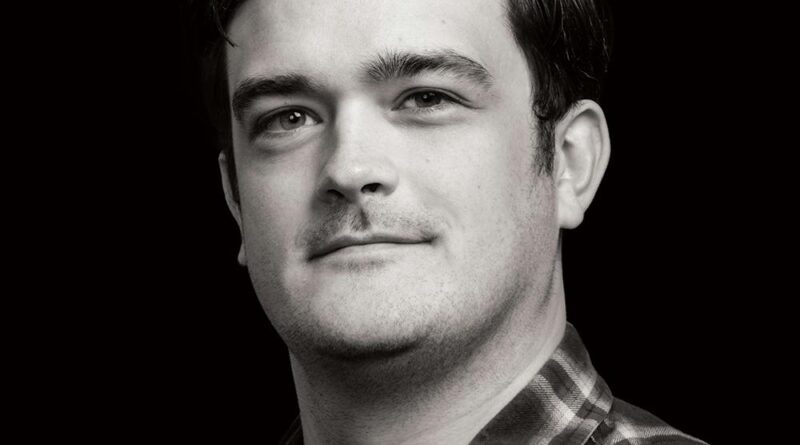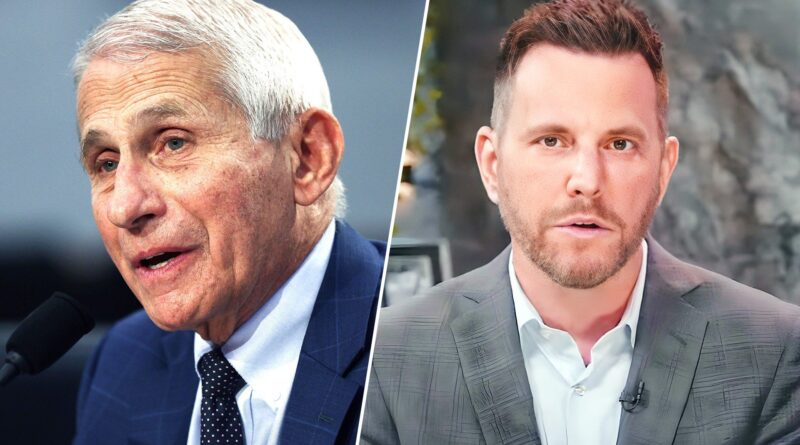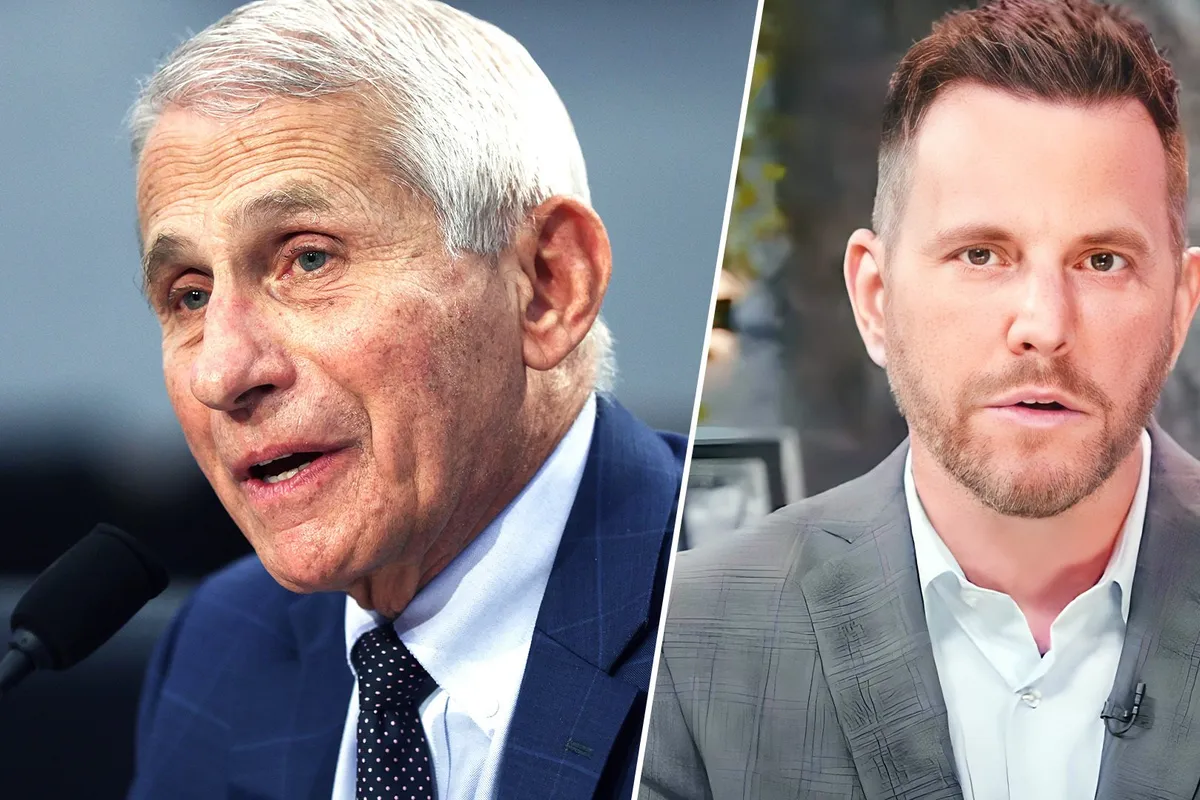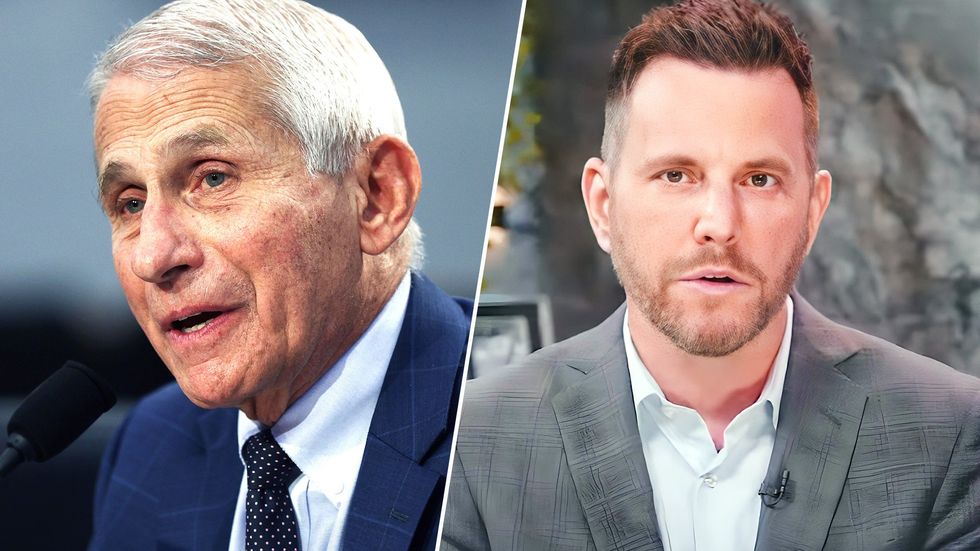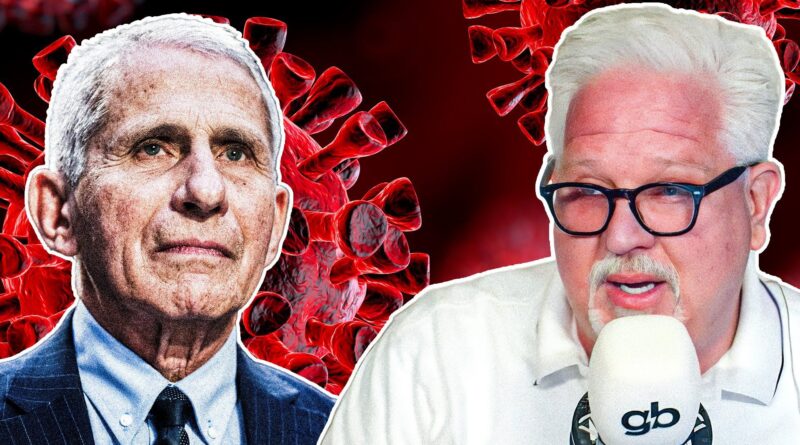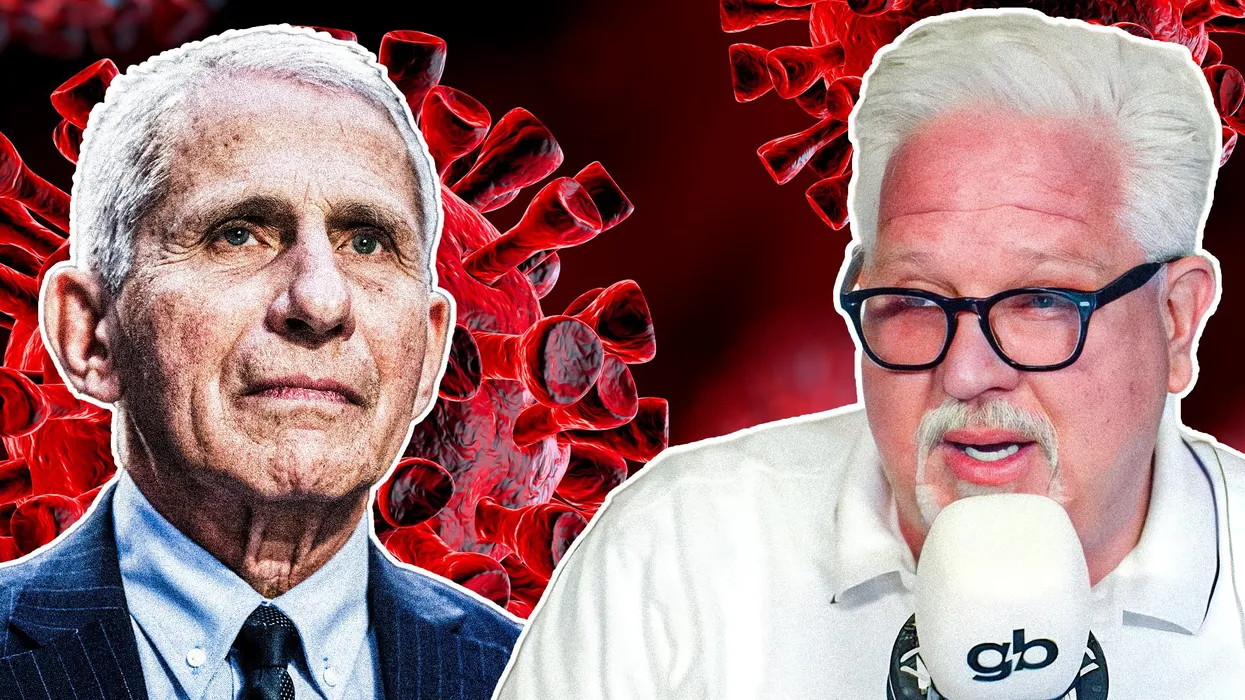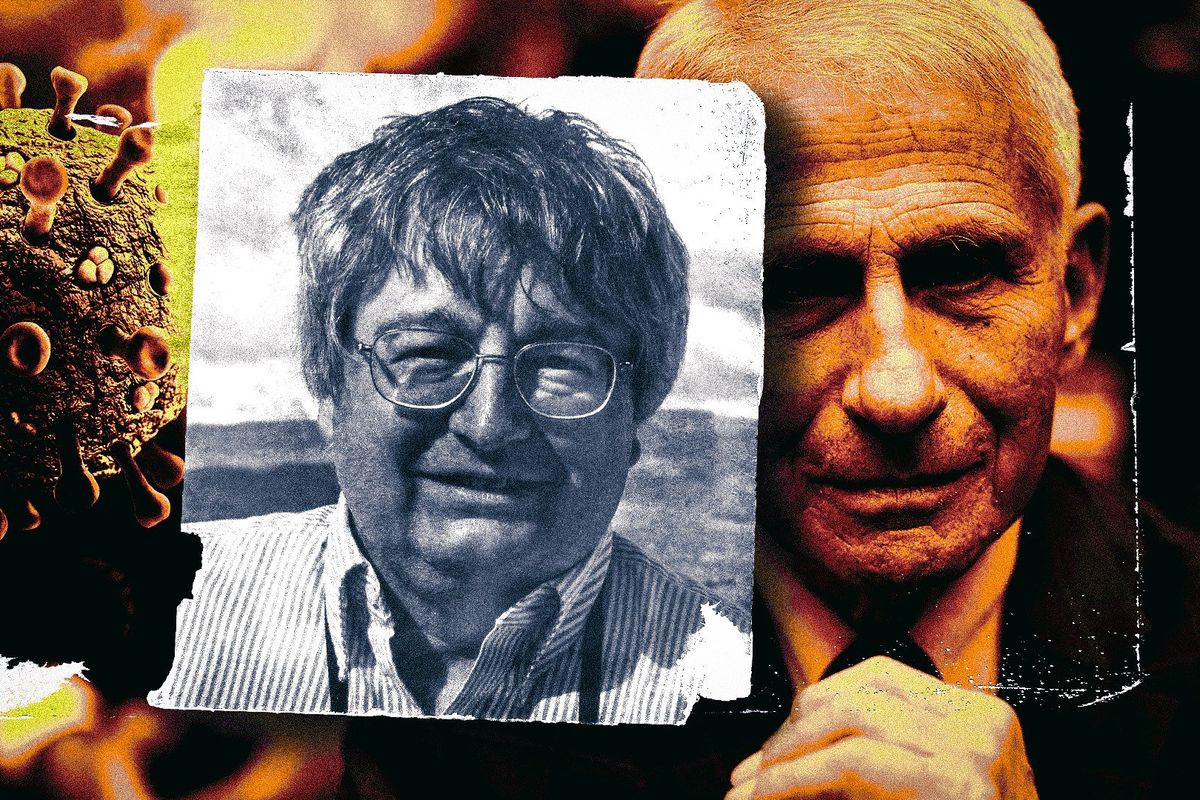
In late 2017, U.S. State Department officials in Beijing were treated to an alarming presentation by the Chinese government. There, a group of scientists from the Wuhan Institute of Virology gave a presentation on a new study they were about to release entitled “Discovery of a Rich Gene Pool of Bat SARS-Related Coronaviruses Provides New Insights into the Origin of SARS Coronavirus.”
What alarmed the diplomats about the presentation was that the researchers claimed they had discovered three new viruses that contained a “spike protein” that was especially effective at grabbing on to ACE2 receptors in human lung cells — which meant these particular viruses were extremely dangerous to humans and that they were being handled in a laboratory the diplomats knew almost nothing about.
The diplomats presciently asked if they could tour the lab and were happily obliged by the proud Chinese government.
Anyone who attempts to definitively determine how many gain-of-function projects were funded by the United States government during the period from 2014 through 2020 can only arrive at the most horrifying answer of all: No one knows.
What they saw on their tour horrified them, and they promptly cabled back to Washington a laundry list of concerns about inadequate equipment and training at the facility that they now knew housed extremely dangerous viruses. The lab’s shortcomings were not hidden — in fact, the technicians frankly admitted them to the visiting diplomats in an apparent bid for funding help from Washington.
Among other things that the diplomats said, however, was their estimation that the WIV was conducting gain-of-function research “on a much larger scale than was publicly disclosed.”
Although much of what has happened at the WIV is shrouded in secrecy, controversy, and active deceit, the most likely explanation for this explosion in undisclosed risky research is simple.
Our government failed, beginning in 2014 and continuing through 2020, to enforce the rules it placed on NIAID Director Anthony Fauci and NIH Director Francis Collins — rules that were designed to ensure that gain-of-function research was slowed or stopped altogether.
In fact, thanks to Fauci and Collins, anyone who attempts to definitively determine how many gain-of-function projects were funded by the United States government during the period from 2014 through 2020 can only arrive at the most horrifying answer of all: No one knows.
The reason for that is simple: Fauci and Collins designed a system that obscured the number of such projects from anyone who might provide meaningful oversight over their work.
+++++++++++++++
After the string of debacles that plagued the community conducting research on dangerous viruses in 2014, the action taken by the Obama administration could not have been clearer — although you would not know it from watching Fauci answer questions in front of Congress.
More — much more — deserves to be said about Baric later. But his frank admission in the waning days of 2014 indicates that there was no real mystery to anyone about what the Obama administration officials wanted — and thought they were getting — when the moratorium was instituted.
In a policy announced October 17, 2014, by the White House’s Office of Science and Technology Policy, the administration declared, “Following recent biosafety incidents at Federal research facilities, the U.S. Government has taken a number of steps to promote and enhance the Nation’s biosafety and biosecurity, including immediate and longer-term measures to review activities specifically related to the storage and handling of infectious agents.”
The policy was expressly designed to encompass all “gain-of-function” studies, which were defined simply and broadly enough as studies that “aim to increase the ability of infectious agents to cause disease by enhancing its pathogenicity or by increasing its transmissibility.”
To be even clearer, the announced policy went on to state, “U.S. Government will institute a pause on funding for any new studies that include certain gain-of-function experiments involving influenza, SARS, and MERS viruses. Specifically, the funding pause will apply to gain-of-function research projects that may be reasonably anticipated to confer attributes to influenza, MERS, or SARS viruses such that the virus would have enhanced pathogenicity and/or transmissibility in mammals via the respiratory route.”
To any scientist of even modest intelligence, it cannot have been a mystery what sorts of studies were supposed to be paused while this moratorium was in place.
In a fatal mistake, the Obama administration “concluded it had addressed the subject and turned its attention elsewhere,” according to Dr. Richard Ebright. “Collins and Fauci were able to use the lack of attention to undermine and nullify the policy.”
+++++++++++++++
The policy was certainly clear enough to perhaps the most prominent “gain-of-function” researcher in the world, Dr. Ralph S. Baric. Baric is the William R. Kenan Jr. Distinguished Professor in the Department of Epidemiology and Professor in the Department of Microbiology and Immunology at the University of North Carolina and one of the central figures in the controversy over the origins of COVID-19.
In this regard, the Obama administration appears to have completely misunderstood Collins’ and Fauci’s nature.
Baric has authored hundreds of scientific papers, and since 1986, his lab has received over $93 million from the NIAID to fund his research projects. A 2014 NPR profile of Baric described him as “probably the foremost coronavirus biologist in the United States and one of the best in the world.”
Baric certainly understood immediately that the announced policy ought to apply to all of his work. As he told NPR at the time, “It took me 10 seconds to realize that most [of my lab’s research projects] were going to be affected.”
More — much more — deserves to be said about Baric later. But his frank admission in the waning days of 2014 indicates that there was no real mystery to anyone about what the Obama administration officials wanted — and thought they were getting — when the moratorium was instituted.
Perhaps the only person who believed there was wiggle room was, of course, Anthony Fauci.
+++++++++++++++
The fatal flaw in the moratorium was a clause granting the heads of agencies the ability to make exemptions to it “if head of funding agency determines research is urgently necessary to protect public health or national security.”
In this regard, the Obama administration appears to have completely misunderstood Collins’ and Fauci’s nature or their apparent belief that all such research was “urgently necessary to protect the public health or national security,” because by all accounts, virtually every gain-of-function study that applied for an exemption during this time period received one.
By Ebright’s count, this means that dozens of studies were fully funded and approved in spite of the alleged pause.
Ebright believes that the reason Fauci and Collins acted this way was because of a posture that anyone who has watched them on television is familiar with: They believed they knew better than the dumb old policymakers who were trying to constrain them. “They made that clear many times that these are ignorant people calling for second-guessing of scientists.”
Fauci demonstrated this just weeks ago. At his most recent session of congressional testimony, Fauci faced a series of increasingly incredulous questions from members of Congress who sought to understand why Fauci has repeatedly claimed under oath that his agency did not fund gain-of-function research at the Wuhan Institute of Virology.
Fauci retreated to a familiar refrain. Said Fauci, “According to the regulatory and operative definition of [Proposed Research Involving Enhanced Potential Pandemic Pathogens], the NIH did not fund gain-of-function research at the Wuhan Institute of Virology.” In other words, according to Fauci’s own understanding of the regulations governing gain-of-function research, the research funded by now-suspended NIH contractor EcoHealth Alliance did not qualify.
The Washington Post reporters got a taste of what it’s like to try to nail Fauci down on this question when they asked Fauci and Collins a fairly simple question: How many gain-of-function research studies has your agency approved since 2012?
Of course, Fauci’s habit of defining regulations that would constrain his power out of existence is not a new phenomenon for him.
As even the Washington Post was forced to admit in a lengthy 2021 piece, scientists who have worked for and with Fauci since the pause was initiated in 2014 have sounded the same refrain: When faced with a ban on funding “gain-of-function” research, Fauci simply by default resorted to a definition of “gain of function” that would not entail whatever research he wanted to fund.
After years of stonewalling and hair-splitting, NIH principal deputy director Lawrence Tabak finally admitted last month what Fauci would not: that under the “generic” definition of the term, the NIH had, in fact, funded gain-of-function research at the Wuhan Institute of Virology.
+++++++++++++++
The Washington Post reporters got a taste of what it’s like to try to nail Fauci down on this question when they asked Fauci and Collins a fairly simple question: How many gain-of-function research studies has your agency approved since 2012?
As characterized by the Washington Post, “Asked to provide the number of projects funded, Collins and Fauci suggested the answer would hinge on how the work was defined in a given year.”
Not being satisfied with that answer, the reporters asked an NIH spokesperson to provide the answer, whereupon they were told that “relevant information could be found in an agency database that archives tens of thousands of grants each year.”
However, the reporters noted, the database they were pointed to did not, in fact, designate which grants were for gain-of function research at all.
Their experience confirmed what Ebright told Blaze News: that it is simply not possible for even a well-informed and savvy citizen to ascertain what gain-of-function research is being conducted with his tax dollars at all, and thus it is impossible to know how many research projects were improperly continued during the period of the ostensible pause.
The federal database listing research grants contains over 50,000 entries at any given time, of which Ebright estimates only a couple dozen pertain to gain-of-function research — and those gain-of-function research studies are not labeled as such in any way.
In fact, it is safe to say, given the current controversy, that grant writers do their best to avoid making their grants appear to fund gain-of-function research, making the task of searching for them even more impossible for a layperson.
That is not to say, however, that it would have been impossible, or even difficult or unusual, to set up a system that would allow for tracking of gain-of-function studies. In fact, such categorical tracking is the norm in the scientific grant-writing world, due to legislative and regulatory requirements that require reporting back to Congress or other entities regarding activities undertaken with various categories of funding.
“There are what are referred to as NIH spending categories,” Ebright explained. “There are searchable spending categories for all different terms. For example, search on biodefense, you can find a total portfolio for biodefense. You can do the same on any pathogen or any disease or even protein or nucleic acid.”
In spite of the moratorium (and later the P3CO framework), however, no such category was ever created for gain-of-function research. Ebright views this, quite reasonably, as a deliberate choice.
“The reason these categories do not exist is that the NIH declines to identify projects as involving those, because if it identified projects as involving those, you could not nullify the P3CO policy and fail to provide the proposals to the HHS secretary for review,” Ebright told Blaze News.
In fact, it is safe to say, given the current controversy, that grant writers do their best to avoid making their grants appear to fund gain-of-function research, making the task of searching for them even more impossible for a layperson.
Finding those few needles in such an enormous haystack is a task that frankly no one can undertake. It is difficult to avoid the conclusion that the system is deliberately designed to hide this research from the public and regulators alike.
Beginning on January 20, 2017, Donald Trump would become at least the third consecutive president to fail to understand the need to exercise proper oversight over Fauci and Collins.
As the Post was forced to admit, many studies that appear to have clearly met the definition of “gain-of-function” research announced in the pause were funded and continued even after the pause was announced. More, they noted that former HHS official Dr. Robert Kadlec admitted, “Frankly, we didn’t have the scientific wherewithal” to even evaluate which studies should be subjected to the pause.
The best we can do, therefore, is guess. Ebright estimates that around a dozen or so projects would have been active in any given year prior to the outbreak of the pandemic, which comports with the Washington Post’s investigation.
This was the same pace at which studies were conducted prior to the institution of the pause, which means that the so-called “pause” did not even slow down the pace of gain-of-function studies, much less actually pause them.
+++++++++++++++
Beginning on January 20, 2017, Donald Trump would become at least the third consecutive president to fail to understand the need to exercise proper oversight over Fauci and Collins.
In this regard, Trump was hampered by rampant instability in the Department of Health and Human Services, particularly at the top of the agency. His first nomination for HHS secretary, Tom Price, resigned about six months into the job. Price was replaced by two interim directors who lasted a combined four months. A permanent HHS secretary was really not found until Alex Azar was confirmed in late January 2018.
During the instability of 2017, Fauci and Collins prevailed upon HHS officials to replace the moratorium — which they were ignoring anyway — with the “HHS Framework for Guiding Funding Decisions about Proposed Research Involving Enhanced Potential Pandemic Pathogens,” which would come to be known as the P3CO framework.
In theory, the P3CO framework relaxed the rules imposed by the 2014-2017 moratorium, which was supposed to have prevented this research from going forward at all.
In actuality, if the P3CO framework had been followed, it would have made Fauci and Collins’ life much more difficult, because it required secretary-level review of all research that fit within its framework. It also, at least in theory, required a stringent risk-benefit analysis of all projects before funding began.
During a period when it can be safely assumed that dozens of projects were funded that increased the transmissibility or pathogenicity of viruses covered by the P3CO framework, a grand total of one of these projects was ever submitted for review to the committee.
However, by all accounts, the P3CO framework was an even greater failure as a check on gain-of-function research than the moratorium had been. There were two principal reasons for this.
First, the P3CO framework narrowed the definition of what constituted gain-of-function research. The previous three years had shown that Anthony Fauci did not need help narrowing the definition of gain-of-function research, but courtesy of Trump’s HHS, he got it anyway.
Second, and more importantly, both Fauci and Collins were committed to entirely avoiding the independent review the P3CO research called for.
+++++++++++++++
“Although [the P3CO framework] looked effective on paper, in practice, it never even came into existence,” Ebright told Blaze News. “It didn’t come into existence because Collins and Fauci deliberately nullified the P3CO policy … by not identifying projects and forwarding them to the HHS secretary to review.”
Ebright’s contention is borne out by the evidence. In the entire three-year period between the institution of the P3CO framework and the start of the COVID-19 pandemic, only three projects were ever even submitted for review, two of which were simply grandfathered in based on previous approvals.
In other words, during a period when it can be safely assumed that dozens of projects were funded that increased the transmissibility or pathogenicity of viruses covered by the P3CO framework, a grand total of one of these projects was ever submitted for review to the committee.
One staffer, expressing amazement that only two projects had ever actually gone through P3CO review, stated openly, “I’ll just probably be more frank than may be appropriate — I think [our definition of gain of function] is too narrow.”
If you were curious as to what that review entailed, how thorough it was, or what it concluded, you are out of luck. As noted by the Washington Post in 2021, all of the work the committee has “performed” is confidential, and the government has refused to release even the names of the people who have served on the committee, much less any minutes of meetings they may have had.
+++++++++++++++
Even the internal staffers at the NIH privately admitted that projects that should have been reviewed under the P3CO framework were not being reviewed. The Washington Post reviewed video of a January 23, 2020, meeting (in the very earliest days of the pandemic) in which HHS staff were understandably nervous about gain-of-function research, given the recent reports of a new virus circulating in the vicinity of one of the world’s foremost virus research labs.
One staffer, expressing amazement that only two projects had actually gone through P3CO review, stated openly, “I’ll just probably be more frank than may be appropriate — I think [our definition of gain of function] is too narrow.”
+++++++++++++++
Part of the reason that Fauci and Collins felt so free to disregard both the moratorium and the P3CO framework was that they lacked the force of law. Because they were issued as sub regulatory guidance, neither Fauci, nor Collins, nor anyone else faced civil or criminal penalties for disregarding them. Worst-case scenario, if someone found out, was that they could be fired.
“There are laws for research with fissile materials, research that produces hazardous waste. But remarkably, the research category that is the most dangerous of all, the only one that has a truly existential risk, has only advisory guidelines.”
“All of the oversight that has existed for biosafety has been advisory only. None has involved a law or a rule; everything has been guidance or policy frameworks. That means that when one nullifies the policy, one is not breaking the law; one simply is failing to follow policy guidance,” Ebright told Blaze News.
Bizarrely, there is a more stringent and enforceable set of laws on the books with respect to animal cruelty in research than there is with respect to experimentation on viruses that could potentially wipe out the human population on earth.
“We don’t handle vertebrate research this way,” Ebright continued. “There are laws. We don’t handle human subjects research that way. There are laws. There are laws for research with fissile materials, research that produces hazardous waste. But remarkably, the research category that is the most dangerous of all, the only one that has a truly existential risk, has only advisory guidelines.”
+++++++++++++++
We know now that during the period between 2017 and 2020, Fauci and Collins took advantage of this situation to ensure that all research dollars continued to flow uninterrupted and without meaningful oversight, including of course one specific set of research that deserves our special attention: the research conducted at the Wuhan Institute of Virology.
+++++++++++++++
The research conducted at the WIV with taxpayer dollars may or may not have started the COVID-19 pandemic, but it is certainly a compelling case study in the ways Fauci, Collins, and the NIAID funding apparatus used subterfuge, willful ignorance, and bureaucratic indifference to fund research that even the world’s leading gain-of-function researcher called “irresponsible” in testimony to congressional investigators.
In real life, no one from the NIH or NIAID appears to have been checking to see if EcoHealth was actually doing any of these things until its involvement with the WIV and possible connection to the pandemic became the subject of intense public scrutiny.
Some of the research conducted at the WIV was funded by NIH grantee EcoHealth Alliance, which is headed by one of the world’s foremost purveyors of actual disinformation, Peter Daszak. Prior to the company’s suspension, EcoHealth received millions of dollars per year from the NIAID to distribute for virus research.
On paper, EcoHealth Alliance was supposed to supervise its subgrantees to ensure compliance with all HHS regulations and guidance, which would have included both the 2014 moratorium and the 2017 P3CO framework.
In real life, no one from the NIH or NIAID appears to have been checking to see if EcoHealth was actually doing any of these things until its involvement with the WIV and possible connection to the pandemic became the subject of intense public scrutiny.
EcoHealth Alliance now faces debarment for, among other things, failing to supervise research at the WIV and failing to immediately stop the research that was occurring at the WIV when it became clear that the lab was conducting gain-of-function research in violation of the terms of its grant, which was issued during the moratorium.
The NIH might submit the case of EcoHealth as proof of the fact that its system worked, except for one problem: No one at the NIH knew it was occurring for years after it began. The NIH did not even notice that EcoHealth had failed to submit its annual report for two years until congressional investigators brought it up.
Had the COVID-19 pandemic never occurred, it seems highly likely that no one would ever have noticed that the money passed by EcoHealth to the WIV was being used for gain-of-function research. Even the alarming cables from the State Department in 2017 did not motivate EcoHealth, the NIH, or the NIAID to intervene and demand accountability from the WIV scientists.
Although, as noted above, Baric immediately realized in 2014 that almost all of his research should be subject to the pause, he perhaps unsurprisingly was not content to let his millions of dollars in federal funding dry up without a fight.
Any oversight program that merely locks the barn door after the horse has already escaped is at best a cold comfort when dealing with deadly infectious pathogens, as over 20 million dead people can now attest.
+++++++++++++++
To understand how the research could have progressed to the point that it did in the WIV without intervention, one of the most unlikely sources of insight is Dr. Ralph Baric, the University of North Carolina researcher who is perhaps the foremost coronavirus researcher in the world and a leading proponent of gain-of-function research.
Baric has been one of the most enigmatic figures in the debate over the origin of the COVID-19 pandemic. As emails unearthed by U.S. Right to Know in 2020 revealed, Baric was one of the small group of scientists, including Fauci, Collins, Britain’s Jeremy Farrar, and the now-disgraced Peter Daszak of EcoHealth Alliance, who understood that they would be at the epicenter of blame if it were discovered that gain-of-function research at the Wuhan Institute of Virology was responsible for the emerging COVID-19 pandemic.
However, while others (including most notably Daszak) responded to this threat by orchestrating a dishonest public smear campaign against proponents of the lab-leak theory, Baric instead has mostly, as the saying goes, “gone turtle.” Baric has consistently refused comment to any and all members of the media, including, on numerous occasions, Blaze News.
While there can be no doubt that Baric was one of many scientists who worked behind the scenes to shape the scientific community’s messaging about the lab-leak theory, in public he has been as impassive and silent as a sphinx.
Even though on its face this research fell squarely within the definition of the moratorium announced by the Obama administration, Baric was inexplicably granted an almost immediate exemption to the moratorium, and his research resumed with full federal funding.
There’s good reason for Baric’s reticence, and that traces back to his relationship with the Wuhan Institute of Virology’s head coronavirus researcher, Shi Zhengli.
+++++++++++++++
Although, as noted above, Baric immediately realized in 2014 that almost all of his research should be subject to the pause, he perhaps unsurprisingly was not content to let his millions of dollars in federal funding dry up without a fight.
He wrote a letter to the NIH’s biosecurity board protesting that gain-of-function research was a “documented, powerful tool” and arguing specifically that his research, which he claimed was aimed at developing a universal SARS vaccine, should be allowed to continue.
Baric specifically stated that his lab was creating artificial SARS-like viruses that would explore how coronaviruses in the wild might evolve to attack human cells, ostensibly to study how vaccines might be developed that could teach human immune cells to fend off SARS-like diseases.
Even though on its face this research fell squarely within the definition of the moratorium announced by the Obama administration, Baric was inexplicably granted an almost immediate exemption to the moratorium, and his research resumed with full federal funding.
On at least one occasion, though, Baric was effectively made to talk, in a January 2024 interview with investigators for the House Select Committee investigating the pandemic’s origins — and what he had to say was illuminating indeed.
Although this research project was limited, and Baric claims that no actual, physical research on the project took place in Wuhan, it clearly inspired Shi and her colleagues to expand their foray into this risky research, without expanding their safety precautions in the process.
According to contemporary reports, the Wuhan Institute of Virology and Baric became competitors of sorts, with WIV scientists adapting (some might say stealing) Baric’s gain-of-function methods to do research on new chimeric coronaviruses.
So when the COVID-19 pandemic hit, it was natural for many to question Baric’s potential involvement with the research that may have caused it. In the face of increasingly intense scrutiny, Baric remained silent and impassive.
On at least one occasion, though, Baric was effectively made to talk, in a January 2024 interview with investigators for the House Select Committee investigating the pandemic’s origins — and what he had to say was illuminating indeed.
Almost right off the rip, Baric noted that he had concerns about the safety conditions at the Wuhan Institute of Virology. He testified that when he first read some of the papers discussing Shi’s 2012 work on coronaviruses at the WIV, the papers were “very vague about safety conditions.”
When he later learned that the lab was doing work on these viruses under BSL-2 conditions, rather than under a higher level of safety precautions, he thought that was “irresponsible” — to such a degree that he eventually signed on to a paper calling for further investigation, even though such further investigation might well implicate him and his lab.
Daszak, who had been out in the public telling anyone who would listen that the lab-leak theory was a crock only believed in by kooks, emailed Baric attempting to change his mind, leading Baric to call Daszak’s attempts at persuasion an insult to his intelligence and further summarize them as “a load of BS.”
Shi agreed, and the two began a research project that would be fully funded by NIH dollars, with the approval of Fauci, and continued after the moratorium was announced in spite of the ostensible explicit prohibition on funding of exactly this sort of research.
As to whether Baric or anyone else alerted anyone at the NIH or NIAID that gain-of-function research was occurring in a facility that the world’s leading coronavirus gain-of-function researcher called unsafe and “irresponsible,” we can only guess.
We can also only guess whether Fauci and Collins would have listened, if they had been told.
+++++++++++++++
What, exactly, was the joint Baric/WIV project that drew everyone’s attention in the early days of the pandemic?
Back before the moratorium was announced, Baric was working on a collaboration with China’s “bat woman,” Shi Zhengli, a lead researcher at the Wuhan Institute of Virology.
Shi, who had been collecting coronavirus samples from bat species for years, found a coronavirus in 2012 that she called SHC014.
According to a 2021 article in the MIT technology review, Baric approached Shi in 2013 and asked her for the genetic data on SHC014. He said he wanted to take the “spike” gene from SHC014 and transplant it to a copy of the SARS virus he already possessed in his lab, in order to make a new chimeric virus that would demonstrate whether the spike protein of SHC014 was capable of attaching to human cells.
Baric refused to answer our requests for comment in 2021, but in January 2024 he finally broke his silence on this question during his interview with House investigators and made a completely different, and explosive, claim.
Shi agreed, and the two began a research project that would be fully funded by NIH dollars, with the approval of Fauci, and continued after the moratorium was announced in spite of the ostensible explicit prohibition on funding of exactly this sort of research.
The results of their study were published in 2015 under the title, “A SARS-like cluster of circulating bat coronaviruses shows potential for human emergence.”
The acknowledgements of the study acknowledged that it had been funded by the NIAID and also made the following amazing admission: “Experiments with the full-length and chimeric SHC014 recombinant viruses were initiated and performed before the [gain-of-function] research funding pause and have since been reviewed and approved for continued study by the NIH.”
In other words, the study’s authors publicly admitted in their published paper that the NIH had approved the continuation of their research in spite of the pause. Other aspects of the study should have raised alarm bells inside the NIAID and the NIH but did not — including the fact that the viral sequence for the chimeric virus researchers had created was not deposited in the NIH’s genetic sequence database at the time the study was published, in contradiction of the journal’s own reporting standards and accepted scientific practice.
Five years later, several months after the pandemic started, the study’s authors finally issued a stunning correction to their piece and claimed that they had rectified the error by depositing the sequence in the NIH database.
Back in 2021, when my colleague Chris Pandolfo and I wrote a series of stories on the possible origins of COVID-19, we contacted Nature and were told at the time, “Maintaining the integrity of the scientific record is of primary importance to us as, and as soon as we became aware of this issue, we worked with the authors to publish a correction.”
In other words, according to the journal’s editors, the omission of the genetic sequence was an embarrassing error that they were happy to correct.
Baric refused to answer our requests for comment in 2021, but in January 2024 he finally broke his silence on this question during his interview with House investigators and made a completely different, and explosive, claim.
He claimed that he did not deposit the genetic sequence for SHC014 in the NIH’s public database because people at the NIH and Nature – presumably with Fauci’s blessing — asked him to help keep SHC014’s genetic sequence secret from his Chinese research partners.
These questions were not on the minds of Fauci and Collins during the course of the early days of the pandemic. Rather, according to Baric, they were focused on something else entirely.
According to Baric, they took this precaution “in collaboration with discussions with NIH, with our program officer, and the journal. And to some extent, it was a natural extension for — in response to the transmissible flu studies and whether or not the virus sequences should be made available.”
If true, this provides at least a plausible explanation for Baric’s failure to upload the genetic sequence, but it raises an even more pertinent question: If the NIH was concerned enough to literally hide the genetic sequence Baric created from his own research partner, why did the NIH not kill the research project altogether? And why had the agency funded it in the first place?
+++++++++++++++
These questions were not on the minds of Fauci and Collins during the course of the early days of the pandemic. Rather, according to Baric, they were focused on something else entirely.
Among other things Baric said during the course of the interview with House investigators, he revealed that he attended a February 11, 2020, meeting with Fauci and others in the early days of the pandemic.
As the world’s leading coronavirus researcher, Baric recalls that he was not asked about the best ways to fight this new, novel coronavirus but rather about his 2015 research with Shi and whether it should have been paused under the Obama moratorium.
“I think you have to look at it from my perspective,” Baric told investigators. “Which is, I’m being called to talk about a paper I published on the gain-of-function regulation. And I’m freaked out that perhaps I didn’t do the paperwork right. So I was focused on that.”
Among the internet sleuths who have been trying to piece together the story of the origins of COVID-19 since its early days, one email from Dr. Anthony Fauci is perhaps the most well-known part of the lore.
Baric’s admission was revealing. Even before the public had any awareness that gain-of-function research might potentially be implicated in the COVID-19 pandemic, Fauci was certainly aware that it might become implicated and was clearly motivated to make sure that his backside was covered.
The reason for that is simple: Dr. Richard Ebright.
+++++++++++++++
Among the internet sleuths who have been trying to piece together the story of the origins of COVID-19 since its early days, one email from Dr. Anthony Fauci is perhaps the most well-known part of the lore.
That email, which was unearthed by U.S. Right to Know, was sent on February 1 by Fauci to his principal deputy, Hugh Auchincloss, telling him in almost palpable panic, “It is essential that we speak this AM. Keep your cell phone on. … Read this paper as well as the e-mail that I will forward to you now. You will have tasks today that must be done.”
Most proponents of the lab-leak theory believe, with good reason, that this email signaled the beginning of Fauci’s efforts to assemble a coordinated response to the emerging lab-leak theory. What, though, was the study and accompanying email? Well, the study was Baric’s and Shi’s collaborative 2015 study on coronaviruses, which stated in its acknowledgement that it was funded by the NIAID.
The Science article that kicked off the discussion, however, contained a prominent quote by Fauci’s old antagonist, Dr. Richard Ebright. Ebright was quoted in the article as saying that the early data was “consistent with entry into the human population as either a natural accident or a laboratory accident.”
Ebright’s balanced take was followed immediately by a virtually hyperventilating self-serving denial from Daszak, who was already perfecting his technique of defending his work by insulting everyone who questioned it.
Against this, a few things should be noted that Baric deserves credit for.
It isn’t difficult, however, to put the puzzle pieces together on what kicked off the largely discredited campaign to suppress the lab-leak theory: This guy Richard Ebright was talking to the press again, and they appeared to be listening.
+++++++++++++++
But let’s revisit Dr. Baric. Some of Baric’s actions since the start of the pandemic have been subject to unflattering scrutiny, for good reason. It definitely appears that Baric, who was well aware of the conflicts of interest inherent in what he was doing, was permitted to participate in the authorship of papers that exonerated his work, even though those papers did not list him as a co-author.
This was, by all accounts, a breach of scientific publishing ethics on the part of all involved. And it is definitely appropriate to question the wisdom of Baric’s entire research career, given what has happened since 2020.
Against this, a few things should be noted that Baric deserves credit for.
First, it seems clear that his laboratory, at least, was safer than the Wuhan Institute of Virology. To the best of anyone’s knowledge, it has never yet been responsible for a leak or other accident that has imperiled the public. Whatever else might be said about the paper Baric co-authored with Shi in 2015, at the very least that research was conducted in his laboratory.
Baric’s comments to House investigators mirrored those he made in an email he sent to Daszak that was surprising in its bluntness.
Second, to his credit, he appears to have been perhaps the only scientist involved in the early coordination effort who realized the inappropriateness of the effort, led by Daszak and Fauci adviser Richard Morens, to unlawfully avoid the eventual discovery of their emails via FOIA requests.
And finally, Baric’s testimony to House investigators was almost shockingly frank in its condemnation of the research that the Wuhan Institute of Virology had been doing since his collaboration with Shi, which he viewed as being done under unsafe conditions, calling the decision to continue doing work culturing pathogens in a BSL-2 laboratory “irresponsible” and admitting, even though he still believed at the time that the pandemic likely had a natural origin, that the decision to conduct these experiments under these unsafe conditions made the lab-leak theory a plausible explanation.
Baric’s comments to House investigators mirrored those he made in an email he sent to Daszak that was surprising in its bluntness.
“Your [sic] being told a bunch of BS. Bsl2 w negative pressure, give me a break… Yes china [sic] has the right to set their own policy. You believe this was appropriate containment if you want but don’t expect me to believe it. Moreover, don’t insult my intelligence by trying to feed me this load of BS,” Baric intoned.
In other words, Baric knew that during the period of the supposed moratorium, the Wuhan Institute of Virology was performing experiments that he considered to be unsafe, using federal dollars, and that no one was doing anything to stop it.
What we don’t know is how many other EcoHealth Alliance companies were out there, doling out money to unsafe labs and exercising no or little oversight over the projects they were funding.
But soon enough, the world would have reason to ask. And the answers would prove to be less than satisfying.
Read More


